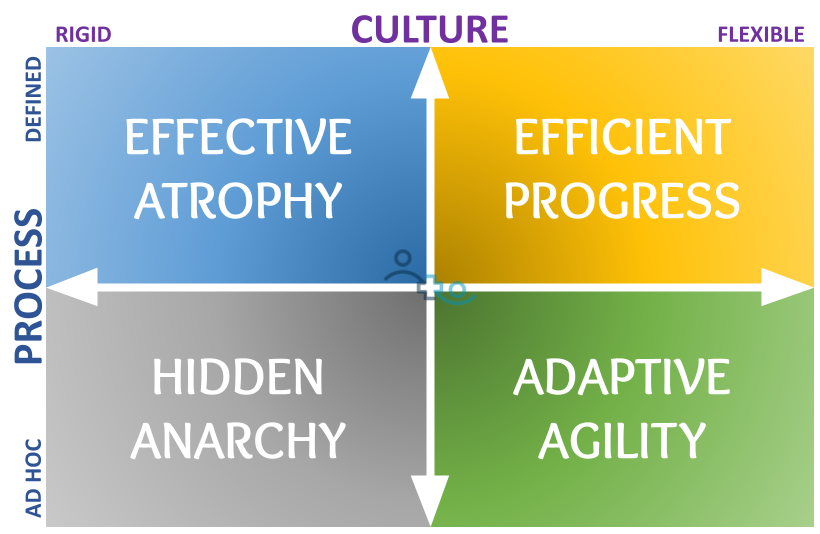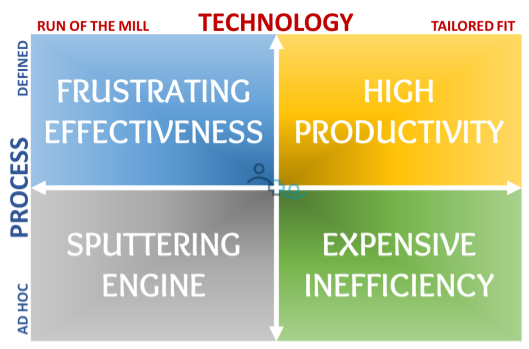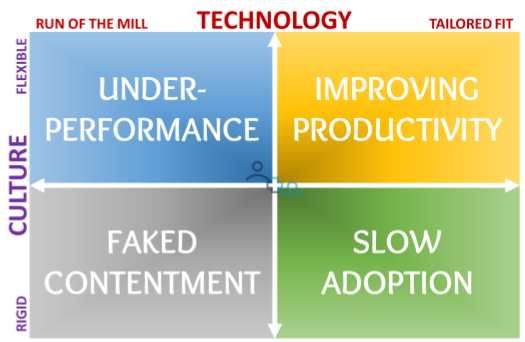In the world of healthcare, a CPT® code typically refers to the (trademarked) acronym of the Current Procedural Terminology, a set of codes used to describe medical procedures received by patients.
In the world of communications, a code is a system of rules to convert information into another form. Like a Morse code, an encryption code — or a code to translate medical procedures into a single 5-digit number, as in the CPT® code.
The code that I’d like to discuss in this week’s Telehealth Tuesday is about the effect of Culture, Process, and Technology on progress, innovation, improvement in a healthcare organization.
- The avalanche of Digital Health innovation ($70B venture capital investments over the past 10 years).
- The emergence of the Modern Healthcare Consumer (desiring trust, quality, convenience, and value).
- The Covid-19 health crisis making telehealth a primetime care modality that defies geographic boundaries.
So what are the three key ingredients to react to these seismic changes? They are: a flexible culture, well-defined processes, and tailored technical solutions.
Finding your C.P.T. Code
As creative human beings we can find a solution to virtually any problem. But first we got to know what the problem is that we are trying to solve. It’s approaching the challenge with awareness about the obstacles and clarity on what needs to be done.
A shorthand for this can be to determine your team’s or your organization’s “CPT” code: how well you rank each of the three dimensions against the ideal state. To determine your team’s code, simply rank yourself on a scale of 1-5 against the desired level, with 5 being the highest score:
- How flexible is your culture when it comes to change (1-5)?
- How defined are the processes (1-5)?
- How well have the technology solutions been selected to suit your unique requirements (1-5)?
I.e., a high-performing team would have a C.P.T. code of “5-5-5” and a team not ready for effective change a code of “1-1-1”.
Let’s explore how the various combinations of Culture, Process, and Technology rankings affect each other.



Culture vs. Process
When the culture of an organization is very rigid, it is very resistant to change. A lot must happen before the people in such an organization move into the desired direction.
A flexible culture on the other hand is prepared or maybe even expecting new changes all the time and maybe even thriving on something new.
On the process side, when the workflows and the steps and the hand-offs between people are not well-defined, we find ourselves in an “ad hoc” world, where everybody mostly does what they think is right or needed, with lots of variation across the team and maybe even from week to week.
In an ideal environment, workflows and processes are documented and everybody knows their role and responsibility.
When you have a team with a flexible culture and well-defined processes, then progress can happen very efficiently (the yellow quadrant). If on the other hand the culture is rigid with very loosely defined processes, you have a Hidden Anarchy — everybody can do what they want and everybody likes it this way, no complaints.
If workflows are not well defined, but the culture is open to change, the lack of defined processes may provide great opportunities for Adaptive Agility – changing the work to the problem or task at hand. E.g., a clinical team serving the homeless population out in the world needs a lot of flexibility to deal with the variety of challenges they are sure to encounter.



Technology vs. Process
On the technology dimension, the desirable state is one of using technology solutions that are a tailored fit to the unique needs and requirements. On the opposite end of the spectrum is the selection of standard, default technologies that were selected for reasons other than their usability or performance.
When tailored solutions are used in a well-defined process environment, the result is very High Productivity. With documented, repeatable steps and a solution that does exactly what is needed, the team can deliver high quality services. Imagine for example an OR team with specialized surgical tools: all steps are pre-planned and each tool is picked for the unique task at hand.
On the other hand, when an organization has well-defined processes but is not provided with tailored solutions, you get Frustrating Effectiveness: yes, the processes get the job done, but it’s very inefficient and frustrating because the tools are not optimized for the task at hand. E.g., think about quickly cobbled-together telehealth solutions embedded in EHRs.
If tailored tools are indeed available, but little thought was put into the standardization of the processes, then the quality varies greatly depending on the conscientiousness of the individual user. Ultimately it’s an Expensive Inefficiency that results, given the usually high cost of customized technology solutions.
In the lower-right, gray quadrant we find ourselves what could best be described as a Sputtering Engine: there’s great variability in the processes and the technology tools are whatever is available. Work gets done, but it’s inefficient, ineffective and probably has a great deal of quality fluctuation.



Technology vs. Culture
In the last “match” of the three elements of the C.P.T. code, we are pairing Technology and Culture.
With a rigid culture that is unwilling to embrace change but forced to use non-optimized solutions, you find a sentiment of Faked Contentment. Unwilling to admit that change must happen, the team plows on despite the many frustrations or shortcomings of the technology.
If the culture is more flexible, at least a degree of the resultant Underperformance is made known and usually efforts are quickly underway to remedy the situation through better technology solutions.
When on the other end of the matrix, the green quadrant, a rigid culture is given some custom-tailored tools, it can best most optimistically be described as a Slow Adoption, since the resistance to change will make it very hard for the team to reap the benefits of the perfect technology.
If however a change-ready culture is handed the perfect-fit technology solutions, the team will run with it and find even better ways to adopt and adapt the technology, most likely finding new and improved ways to provide the service.
Using your C.P.T. code
So, how do you use your CPT code? The main benefit of a self-assessment is simply the self-awareness about your current situation.
The objective is to identify the current shortcomings that stand in the way of changing into a a high-performing team that delivers outstanding services.
Let’s take the example of a health center that wants to add dental services to its offerings. Their self-assessed CPT code is 2-1-2: a culture quite resistant to change, no defined processes (since this is a new offering) and no access to custom solutions, such as an EMR optimized for dental services.
The team next decides that in order to launch the new dental service successfully, they’d like to get their CPT code up to a 4-4-4 and they identify a set of specific actions to close the gap between their 2-1-2 and the desired 4-4-4. Here are just a few examples:
-
Technology: Assess the features of their current EMR with regards to supporting dental services. Talk to other health centers using the same EMR that are offering dental.
-
Processes: Define the ideal/desired workflows (which later would also inform the search for a custom-tailored technology solutions, once the needs are identified).
-
Culture: Change the team composition to add more that are excited about the change. Increase the desire in “fence sitters” by explaining the financial benefits of this new offering and how valuable dental care is for the overall health of the community.
A CPT code of 2-1-2 would have resulted in a “hidden anarchy with faked contentment running on a sputtering engine” whereas with a 4-4-4 CPT code, the team can now expect a “high, improving productivity with ongoing efficient progress”.
And isn’t that a laudable objective!
What change initiative are you trying to undertake and how would you classify your team’s current CPT code? What are you planning to do about it?








To receive articles like these in your Inbox every week, you can subscribe to Christian’s Telehealth Tuesday Newsletter.
Christian Milaster and his team optimize Telehealth Services for health systems and physician practices. Christian is the Founder and President of Ingenium Digital Health Advisors where he and his expert consortium partner with healthcare leaders to enable the delivery of extraordinary care.
Contact Christian by phone or text at 657-464-3648, via email, or video chat.







Leave A Comment